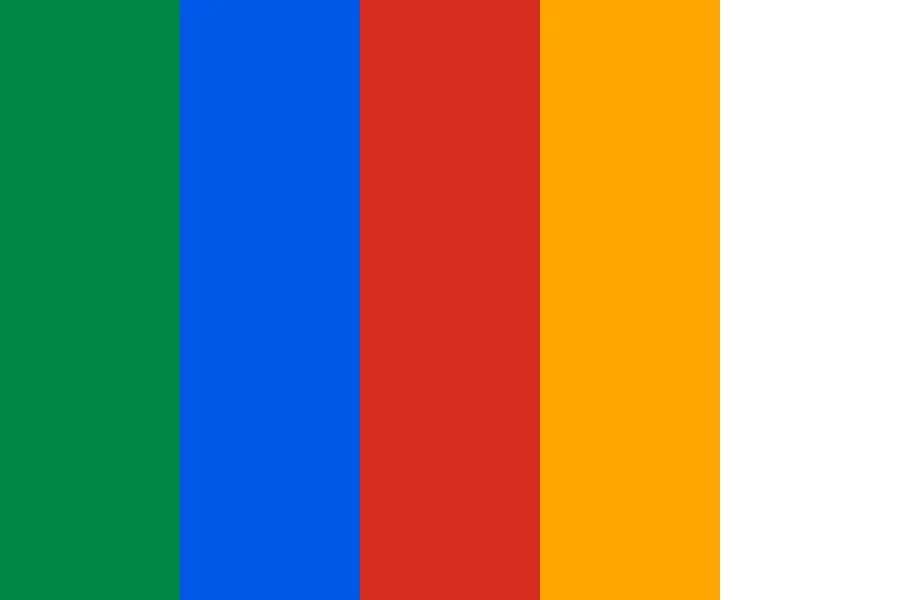As a web designer or owner of a website, it is important to understand the impact of color schemes and choose the right one. A color scheme can have a significant impact on the overall look and feel of your website. In this comprehensive guide.

I will take you through the importance of selecting the right color scheme for your website, understanding color theory, types of color schemes, tips for selecting the perfect color scheme, tools for creating and testing color schemes, examples of effective color schemes, common color scheme mistakes to avoid, and a conclusion to wrap it all up.
I’ll help you answer all these questions in this post. Let’s go to know everything about how to choose the right color schemes for your website.
Introduction to Color Schemes
Color schemes are an important aspect of web design. Designers use a selection of colors known as a color scheme for a range of media. The color scheme used for your website can have a significant impact on the overall look and feel of your website.

You can use color schemes to create a visual hierarchy, evoke emotions, and set the tone for your brand. A well-chosen color scheme can help to create a positive user experience, increase brand recognition and improve the overall usability of your website.
Why Selecting the Right Color Scheme is Important
Selecting a suitable color scheme is important for several reasons. Firstly, color can evoke emotions and create a mood. A suitable color scheme can help to create a positive user experience and increase brand recognition. Secondly, you can use color to create a visual hierarchy, which will make it easier for users to navigate your website.

Thirdly, you can use color to improve the readability of your content, making it easier for users to read and understand your message. Lastly, a well-chosen color scheme can help to improve the overall usability of your website.
Read also How to Ensure Cross-Browser Compatibility: Tips and Tricks
Understanding Color Theory
Color theory is the study of how colors work together. Understanding color theory is important when selecting a color scheme for your website. There are several key terms that you should be familiar with when it comes to color theory.

- Hue – refers to the color itself, such as red, blue, or green.
- Saturation – refers to the intensity of the color.
- Brightness – refers to how light or dark a color is.
- Complementary colors – are colors that are opposite each other on the color wheel.
- Analogous colors – are colors that are next to each other on the color wheel.
Transform your website with Envato Element’s color schemes today. Click here to get started!
Types of Color Schemes
There are several types of color schemes that you can use when designing your website. One can create a different look and feel using each type of Color theme, as they possess their unique characteristics.

- Monochromatic – uses variations of a single color.
- Analogous – uses colors that are adjacent to each other on the color wheel.
- Complementary – uses colors that are opposite each other on the color wheel.
- Triadic – uses three colors that are evenly spaced on the color wheel.
- Tetradic – uses four colors that are evenly spaced on the color wheel.
Transform your website with Envato Element’s color schemes today. Click here to get started!
Choosing the Right Color Scheme for Your Brand
When choosing a color scheme for your brand it’s like choosing a color for your house, it is important to consider the emotions and mood that you want to evoke in your audience. Different colors can evoke different emotions and create different moods.

- Red – evokes passion, love, and excitement.
- Orange – evokes enthusiasm, warmth, and energy.
- Yellow – evokes happiness, joy, and optimism.
- Green – evokes calmness, growth, and nature.
- Blue – evokes trust, security, and professionalism.
- Purple – evokes luxury, creativity, and sophistication.
- Pink – evokes femininity, sweetness, and romance.
- Brown – evokes stability, earthiness, and reliability.
- Black – evokes elegance, sophistication, and power.
- White – evokes purity, cleanliness, and simplicity.
Small advice: the warm colors create a feeling of energy and the cool colors are calming.
Tips for Selecting the Perfect Color Scheme
When selecting a color scheme for your website, there are several tips that you should keep in mind.

- Consider your brand – Your color scheme should reflect your brand identity.
- Keep it simple – Stick to a limited color palette to avoid overwhelming your users.
- Use contrast – Use contrasting colors to create a visual hierarchy and improve readability.
- Consider accessibility – Ensure that your color scheme is accessible to users with color blindness or other visual impairments.
- Test your color scheme – Test your color scheme on different devices and in different lighting conditions to ensure that it looks good in all situations.
Transform your website with Envato Element’s color schemes today. Click here to get started!
Tools for Creating and Testing Color Schemes
There are several tools available that can help you to create and test color schemes for your website.
- Adobe Color – A free online tool that allows you to create color schemes based on color theory principles.
- Coolors – A free online tool that allows you to create and save color schemes.
- Color Safe – A free online tool that helps you to create color schemes that are accessible to users with color blindness or other visual impairments.
- Color Contrast Analyzer – A free tool that allows you to test the contrast ratio of your color scheme to ensure that it meets accessibility guidelines.
Transform your website with Envato Element’s color schemes today. Click here to get started!
Examples of Effective Color Schemes
Several websites use effective color schemes to create a positive user experience.
Netflix: Netflix uses a simple color theme of red and black. The red is used to create a sense of excitement and energy, while the black is used to develop a sense of sophistication and luxury.

Transform your website with Envato Element’s color schemes today. Click here to get started!
Apple: Apple uses a color theme of white and black. The designer uses white to create a sense of simplicity and elegance, and black to create a sense of power and sophistication.

Transform your website with Envato Element’s color schemes today. Click here to get started!
Google: Google uses a color theme of blue and white. They use blue to create a sense of trust and reliability, while they use white to create a sense of simplicity and clarity.

Common Color Scheme Mistakes to Avoid
There are several common color scheme mistakes that you should avoid when designing your website.
- Using too many colors – Stick to a limited color palette to avoid overwhelming your users.
- Using colors that clash – Use colors that work well together to create a cohesive look.
- Ignoring accessibility – Ensure that your color scheme is accessible to users with color blindness or other visual impairments.
- Using colors that don’t reflect your brand – Your color scheme should reflect your brand identity.
Transform your website with Envato Element’s color schemes today. Click here to get started!
Conclusion
Web designers and website owners must optimize the color scheme of their websites to evoke the desired emotion and mood in their audience.
Color schemes have a significant impact on the overall appearance and usability of a website. Opting for the perfect color theme can have a positive impact on the user experience and brand recognition. Choosing the right color scheme for your website can help to improve the quality of your content, increase brand trust and enhance brand recognition.
How to choose the right color schemes for your brand? You need to keep several factors in mind when choosing a color scheme.
When choosing a color scheme for your brand it’s like choosing color for your house. It is important to consider the emotions and mood that you want to evoke in your audience. Different colors can evoke different emotions and create different moods.
For example, red typically evokes passion, love, and excitement. The warm tones in red evoke feelings of warmth and energy, while the cool tones evoke feelings of sophistication and luxury.
Share this content with your friends if you found it useful!